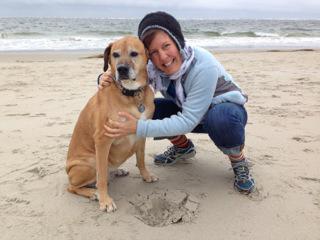Last week, the New York Times published an op-ed by Peggy Orenstein under the unfortunate headline “The Wrong Approach to Breast Cancer.” In her essay, Orenstein—a journalist and breast cancer survivor—joins the handwringing about the “skyrocketing” numbers of breast cancer patients who are diagnosed with cancer in one breast but choose to have the healthy breast removed along with the diseased breast in a procedure called “contralateral prophylactic mastectomy,” or CPM.

Photo by Mary Gray
Orenstein highlights research showing that removing a healthy breast does not significantly increase a woman’s chances of survival in the long run. But other aspects of the procedure—like how CPM affects a woman’s quality of life—are more difficult to measure. I know because I chose CPM after being diagnosed with breast cancer in 2009. I was 38. I was a magazine journalist who wrote about women’s health. I knew that removing my healthy breast would not enhance my odds of survival. I chose to do it anyway. Some would call me emotional, ill-informed, and just plain “wrong.” But five years later, it still feels very right.
It’s true that if survival had been my only concern, my decision would have been simple. The location of my tumor made a lumpectomy impossible. The data clearly pointed to a single mastectomy. But the decision to remove a breast is never a simple calculation. Suggesting as much negates the fact that behind the survival statistics are real women—women who value not just living but also living as comfortably as possible in their post-cancer bodies.
In my case, I didn’t want reconstruction, and I couldn’t picture having only one breast. I tried to imagine my singleton, and it looked as forlorn as the lone survivor of identical twins. And I knew it would be on probation: My remaining breast would require biannual mammograms. Each screening would drum up anxiety and cancer treatment flashbacks. At that cost, I wasn’t sure what I would gain by keeping it. Certainly, my breasts had once conveyed great physical and emotional pleasure. But, post-cancer, I feared the remaining breast would only offer a painful reminder of how much I’d lost.
So I chose symmetry. I had both breasts removed and left my chest flat. Did it increase my odds of survival? No. Did it increase my quality of life? Absolutely. In one fell swoop, I was finished with breast surgeries and with mammography. I could wake up, slip on a T-shirt, and walk my dog without fussing with a bra and prosthesis. During yoga, I could kick up into a handstand without worrying that my fake boob might thud to the floor.
Orenstein derides women who choose CPM for symmetry’s sake by comparing breasts to ears. She writes, “It’s hard to imagine that someone with a basal cell carcinoma on one ear would needlessly remove the other one ‘just in case’ or for the sake of ‘symmetry.’ ” But the comparison of breasts to ears rings false in our hypersexualized society. And Orenstein herself appears to appreciate symmetry, given that she chose reconstruction after her single mastectomy even though she describes her new breast as a “glued-on tennis ball.”
Let’s talk about those tennis balls: I was shocked by the dearth of safe, minimally invasive reconstruction choices for breast cancer patients. Given my options, I chose not to reconstruct even though the pressure to do so was enormous. During the early days of my diagnosis, my plastic surgeon explained how much easier it would be for him to remove and reconstruct both of my breasts instead of just one. He described how my breasts would never truly match and how, as I aged, the bio-breast would sag while the implant would perk along. His sales pitch was smooth. He sounded like a car salesman pressuring a buyer into an expensive upgrade. No doubt he’d delivered the same speech to hundreds of other women. No one mentioned “going flat” as a possibility. I understand it’s not a popular choice, but it wouldn’t hurt to put it on the menu.
Even Orenstein leapfrogs over the option: She moves fluidly between discussing the removal of the breast and the risks of reconstructing it. “Breasts don’t just screw off, like jar lids,” she writes. “Infections can occur, implants can break through the skin or rupture, tissue relocated from elsewhere in the body can fail.” She lists these as arguments against CPM, but she’s talking about the dangers of breast reconstruction, not simply removing the breast, which is a relatively simple procedure.
I see the value of good data: They are crucial for educating breast cancer patients about the pros and cons of treatment options. But data’s blunt edge can’t extract the nuances regarding the value a woman puts on her breasts. Instead of telling us that we are misinformed for choosing CPM—with or without reconstruction—experts and journalists should instead explore the complexities that lurk beneath data’s bright light. In my ideal world: Once survival odds and quality-of-life issues are discussed, and it’s time for a woman to make her final decision—to remove one breast or two, to have a lumpectomy or mastectomy, to reconstruct or not, silicone or saline—we would step back and honor her choice. And why not? She’s the only one who is, we hope, going to live with it.